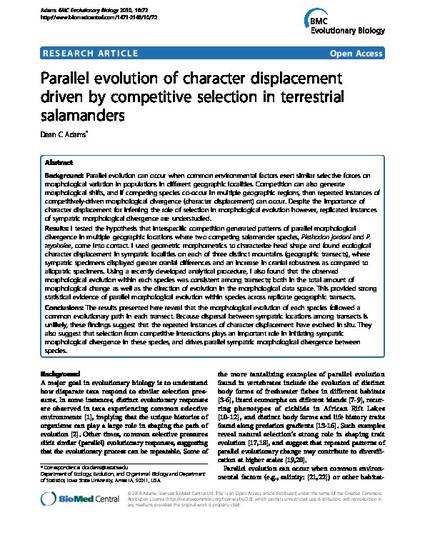
Parallel evolution can occur when common environmental factors exert similar selective forces on morphological variation in populations in different geographic localities. Competition can also generate morphological shifts, and if competing species co-occur in multiple geographic regions, then repeated instances of competitively-driven morphological divergence (character displacement) can occur. Despite the importance of character displacement for inferring the role of selection in morphological evolution however, replicated instances of sympatric morphological divergence are understudied. I tested the hypothesis that interspecific competition generated patterns of parallel morphological divergence in multiple geographic locations where two competing salamander species, Plethodon jordani and P. teyahalee, come into contact. I used geometric morphometrics to characterize head shape and found ecological character displacement in sympatric localities on each of three distinct mountains (geographic transects), where sympatric specimens displayed greater cranial differences and an increase in cranial robustness as compared to allopatric specimens. Using a recently developed analytical procedure, I also found that the observed morphological evolution within each species was consistent among transects; both in the total amount of morphological change as well as the direction of evolution in the morphological data space. This provided strong statistical evidence of parallel morphological evolution within species across replicate geographic transects. The results presented here reveal that the morphological evolution of each species followed a common evolutionary path in each transect. Because dispersal between sympatric locations among transects is unlikely, these findings suggest that the repeated instances of character displacement have evolved in situ. They also suggest that selection from competitive interactions plays an important role in initiating sympatric morphological divergence in these species, and drives parallel sympatric morphological divergence between species.
Available at: http://works.bepress.com/dean-adams/15/

This article is from BMC Evolutionary Biology 10 (2010): 72, doi:10.1186/1471-2148-10-72. Posted with permission.